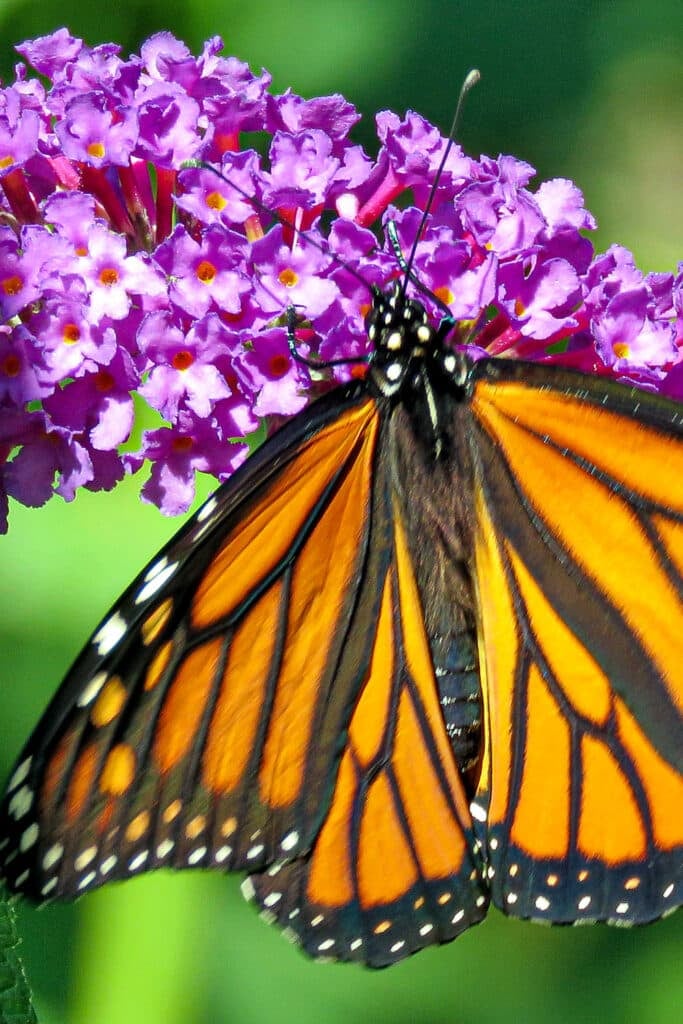How Do I Get My Amaryllis To Bloom Again?
If you’ve ever marveled at the beauty of an amaryllis in full bloom and wondered how to recreate that stunning display, you’re in luck. Understanding the reblooming process of amaryllis bulbs is key to enjoying their vibrant blooms year after year. In this guide, we’ll show you the steps to encourage your amaryllis to bloom again and experience the satisfaction of witnessing its multiple flowering cycles.
By providing the correct sunlight, following specific start-up procedures, and ensuring a proper dormant period, you can maximize your chances of successfully getting your amaryllis to rebloom. We’ll also delve into common reasons why some amaryllis bulbs fail to rebloom, helping you troubleshoot any issues.
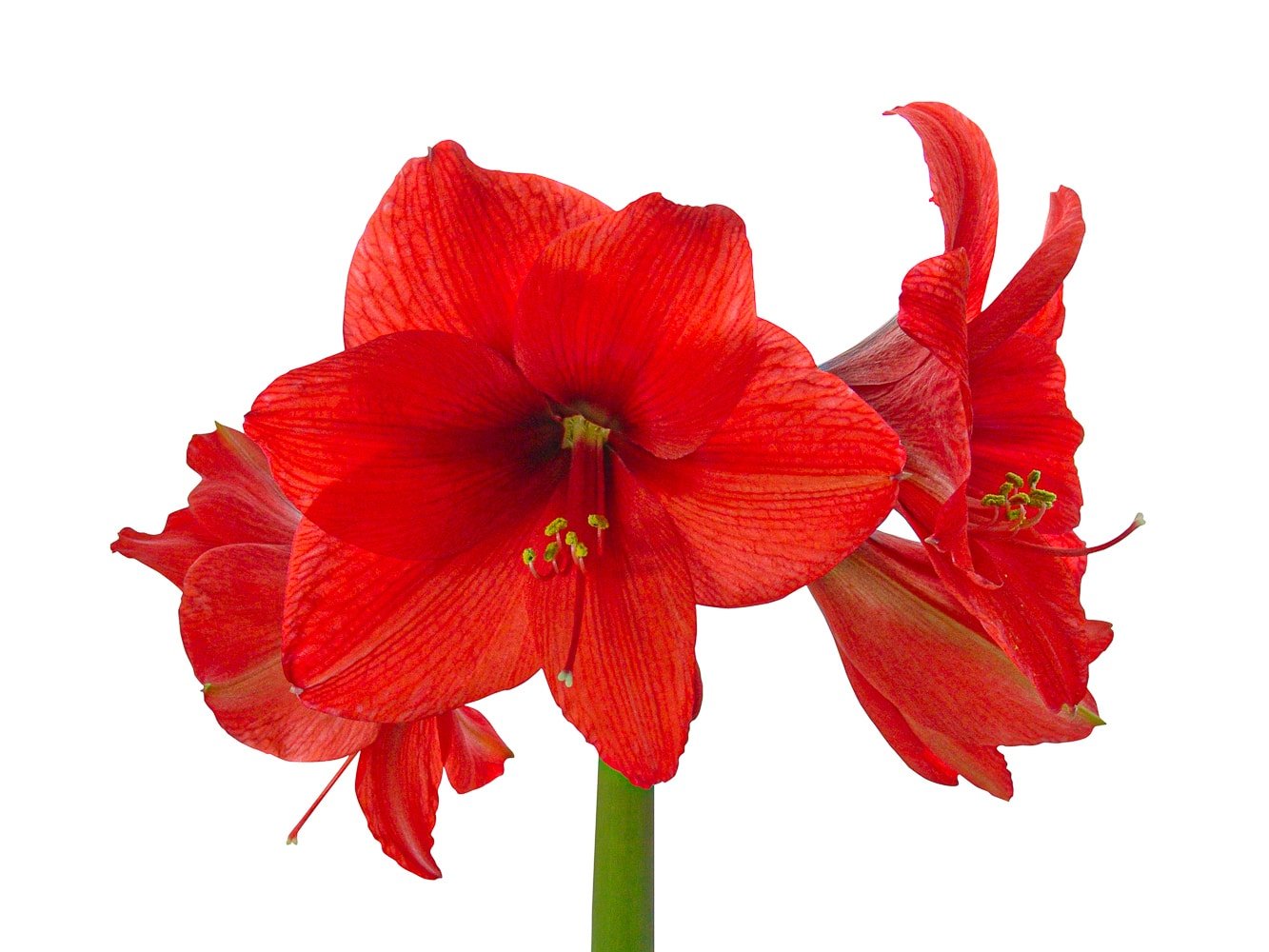
Coaxing an Amaryllis to bloom Starts with A Healthy Bulb
To ensure that the amaryllis bulb is healthy and has enough energy to rebloom, allowing the plant to rest after it finishes flowering is crucial. Once the leaves die and the flowers are spent, cut the flower stalk back to the bulb’s top. Move the plant to a cool, dark place with a temperature of around 55-60 degrees. The bulb needs at least 8-10 weeks of rest.
- Learn More: See our complete guide for growing and caring for Amaryllis tips once your plant has bloomed. Also check out our full guide to storing amaryllis bulbs.
Water the amaryllis sparingly during this period, allowing the soil to dry out between waterings. Apply a balanced, water-soluble fertilizer (10-10-10 or similar) every 4-6 weeks to promote healthy bulb growth.
After the rest period, it’s time to encourage leaf growth by providing the amaryllis with adequate light. Place the plant in a location with bright, indirect sunlight, such as a sunny window. If the bulb has become crowded in its pot, consider repotting it into a slightly larger container during rest.
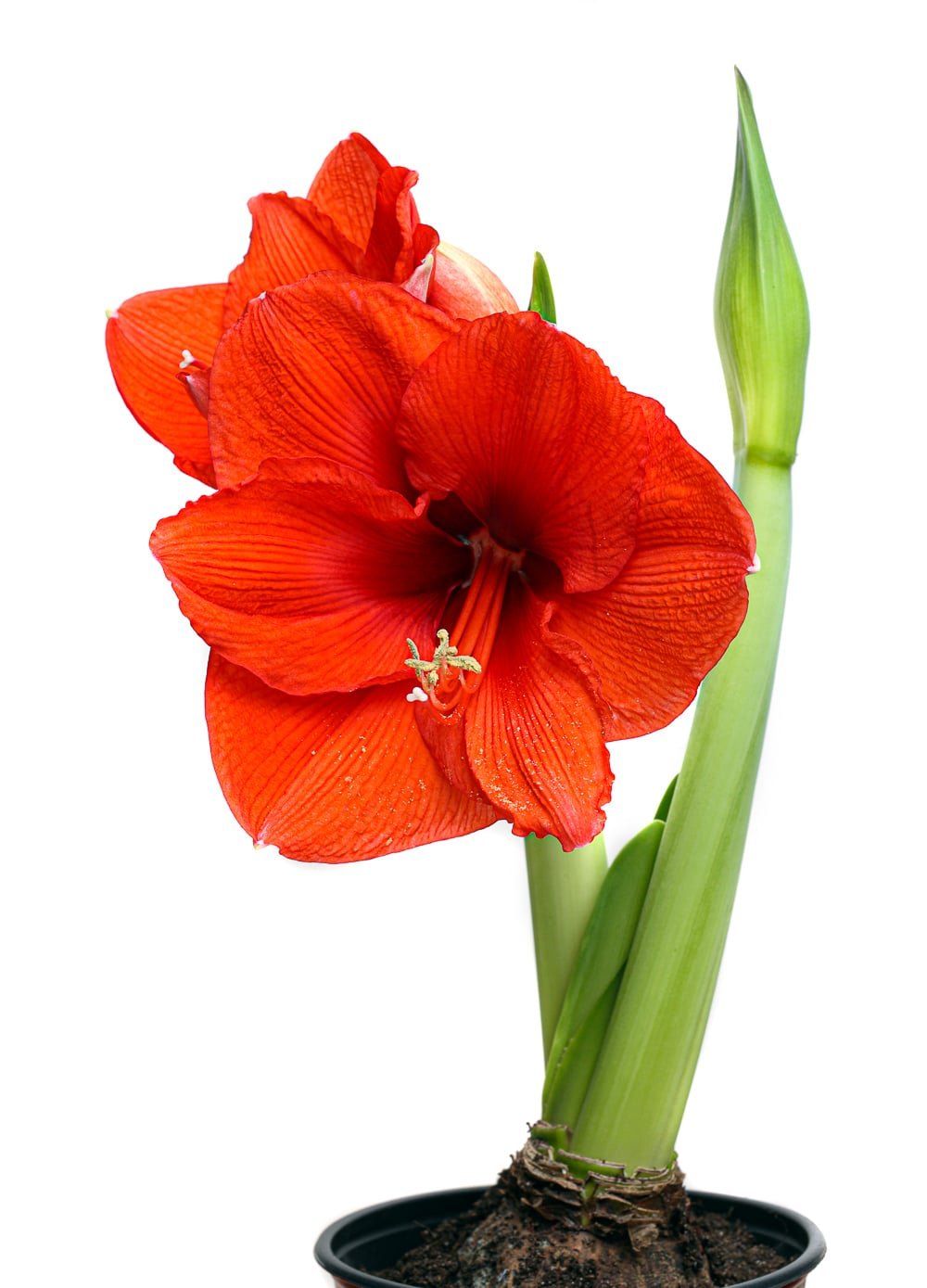
To restart the growth of the amaryllis, begin watering regularly and move the plant to warmer locations with more sunlight about 8-10 weeks before you want it to bloom again. Once the plant resumes growth, a flower stalk will emerge, and regular watering and proper light conditions will help it mature.
To extend the flowering period, keep the amaryllis in a cool location (around 60-65°F or 15-18°C). Also, remove spent flowers to encourage the bulb to produce energy to create a new amaryllis bloom.
After the amaryllis has finished flowering and the leaves have died, you can repeat the process by allowing it to rest and restarting the growth cycle to grow more flowers.
Remember, the amaryllis may take a year or more to rebloom, and results can vary. Patience and proper care are essential to successful reblooming.
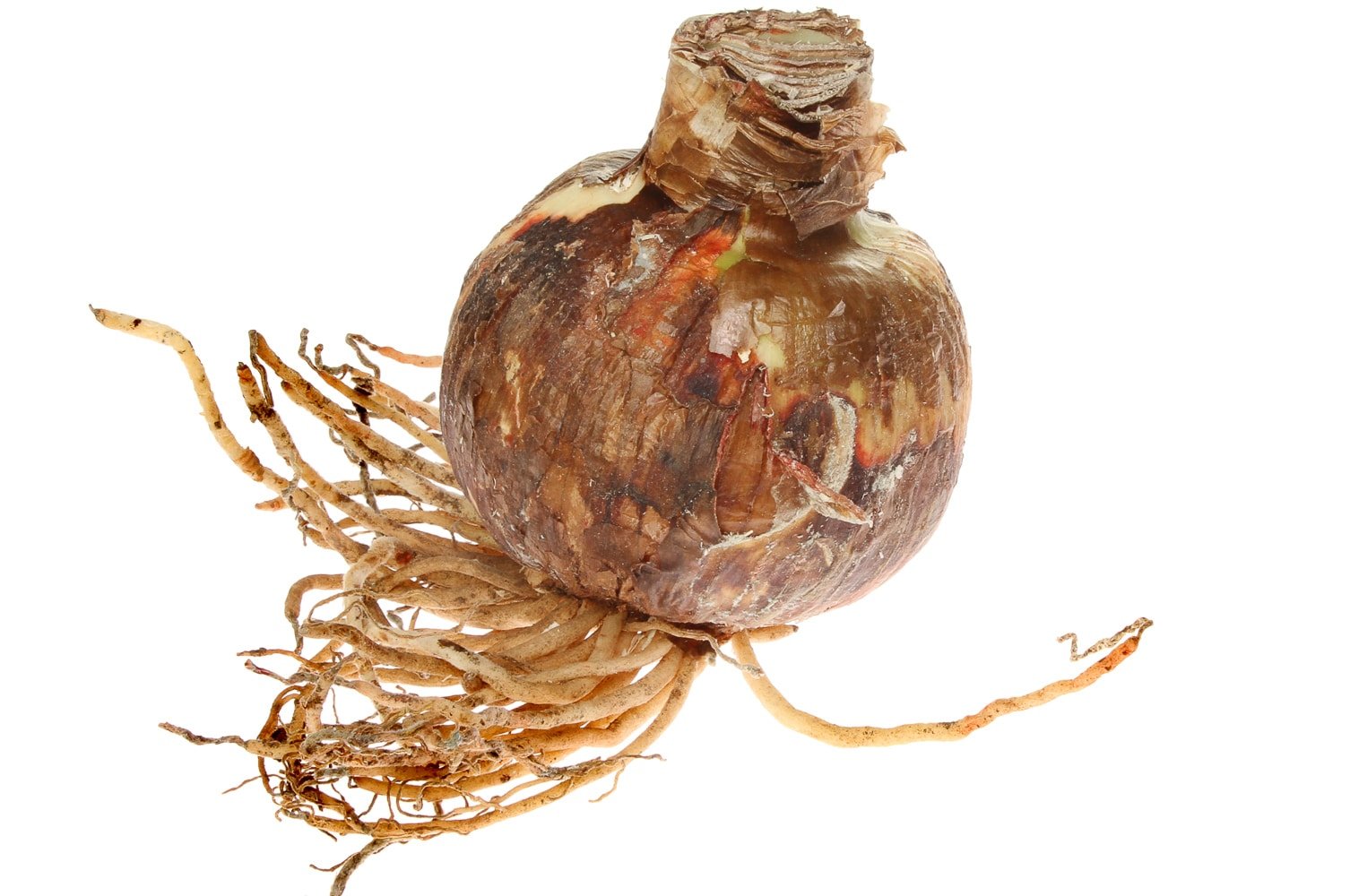
Detailed Instructions and Tips for Reblooming an Amaryllis Bulb
Watering your reblooming amaryllis bulbs
Knowing when and how often to water your reblooming amaryllis bulbs is crucial for their successful blooming. During the growing season, typically from spring to fall, you should keep the soil moist but not overly saturated. Allow the top inch of soil to dry out completely before watering again.
It’s important to note that during dormancy periods in winter, you should reduce watering significantly to prevent rotting.

Fertilizing during the reblooming process
Fertilizing is vital in promoting healthy growth and encouraging your amaryllis bulbs to bloom again. When your plant is actively growing, apply a balanced fertilizer every two weeks or follow the instructions on the fertilizer packaging.
Once flowering has finished, continue fertilizing every four weeks until late summer or early fall. Fertilization will help replenish nutrients and prepare the bulbs for their next blooming cycle.
Maintaining appropriate temperature and humidity levels
Amaryllis bulbs thrive in moderate temperatures ranging from 65-75°F (18-24°C). To encourage reblooming, provide them a consistent temperature within this range throughout their growing season.
Avoid exposing them to extreme heat or cold, hindering their growth and flowering potential. Maintaining moderate humidity levels by misting the leaves occasionally can help create an optimal environment for your amaryllis bulbs.
Related: For more information, check out our full article on storing amaryllis bulbs.

Avoiding overwatering or underwatering during dormancy periods
During dormancy periods in winter, it’s crucial to strike a balance between providing enough moisture without overwatering or underwatering your amaryllis bulbs.
Overwatering can lead to root rot and other fungal diseases, while underwatering can cause stress and hinder future blooming. As a general rule of thumb, water sparingly during these cool, dormant months, allowing the soil to dry out between waterings.
Repotting Amaryllis After Dormancy
Determine the right time to repot your dormant amaryllis bulb.
Once your amaryllis has gone through its rest period, it’s time to think about repotting. But when is the right time? You want to wait until the dormancy, or resting period, is over and signs of new growth start appearing.
This process should not be rushed, as disturbing the bulb too early can disrupt its natural growth cycle. Signs of progress, such as the emergence of new leaves or roots, may indicate that the bulb is ready to be disturbed.

Use well-draining soil mixtures suitable for repotting purposes.
Choosing the right soil mixture is crucial. You’ll want a well-draining mix that allows excess water to flow out easily, preventing soggy conditions leading to root rot.
A good option is a combination of peat moss, perlite, and coarse sand or vermiculite. This mixture provides adequate drainage while retaining moisture for the bulb’s needs.
Choose an appropriately sized pot that allows room for bulb growth.
Picking the right-sized pot for your amaryllis bulb is another important consideration during repotting. The container should have enough space for root development and future bulb growth.
Generally, choose a pot with a diameter of at least 1-2 inches wider than the bulb’s diameter. This extra space will allow room for expansion without restricting growth.
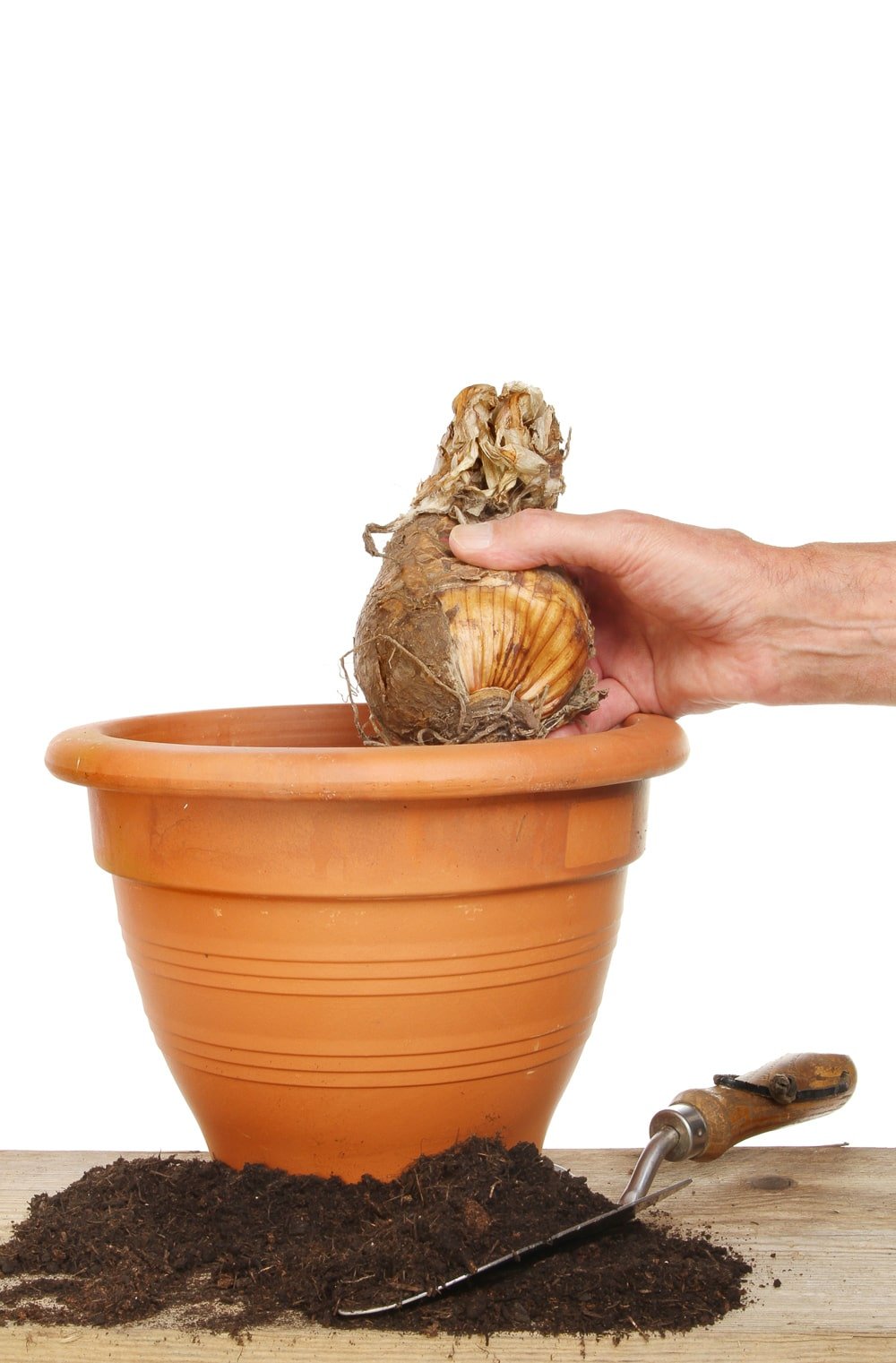
Handle the dormant bulb with care while repotting it into fresh soil.
Handling your dormant amaryllis bulb with care is crucial during the repotting process. Gently remove any old soil or dead roots from around the bulb before placing it in fresh soil mixtures.
Be cautious not to damage any emerging shoots or delicate roots that may have started growing. Treat the bulb like a fragile treasure, and it will reward you with beautiful blooms.
Maintain proper watering techniques after repotting.
After repotting your amaryllis, it’s essential to establish a proper watering routine. The key is to balance keeping the soil moist but not overly saturated. Overwatering can lead to root rot, while underwatering can cause stress and hinder growth.
Water the plant thoroughly when the top inch of soil feels dry, allowing any excess water to drain completely. Remember, consistency is key.

Troubleshooting: Why did my Amaryllis Bulb Fail To Bloom?
There are several reasons why an amaryllis might fail to rebloom. Here are some common factors that can impact the ability of your amaryllis to produce new blooms:
- Insufficient Dormant Period: Amaryllis bulbs require a period of rest after flowering to rebuild their energy reserves. If they don’t get this rest, they may not have the resources to bloom again. Ensure you allow your amaryllis to rest for 8-10 weeks in a cool, dark place after the foliage dies back.
- Inadequate Light: Amaryllis plants need a sunny location to generate the energy required for flowering. They may only produce flower buds if kept in a location with inadequate light. Please place them like a sunny window in a bright, indirect sunlight spot.
- Overwatering or Underwatering: Incorrect watering practices can harm your amaryllis. Overwatering during dormancy can lead to rot while underwatering during the growing season can stress the plant. Follow proper watering guidelines.
- Lack of Nutrients: Amaryllis bulbs need nutrients to produce blooms. Regularly fertilize your amaryllis during the active growing season to ensure they have the nutrients for flowering.
- Age of Bulb: The age of the bulb can affect its ability to bloom. Older bulbs may become less productive in terms of flowering. You can rejuvenate older bulbs by repotting and dividing them.
- Pests and Diseases: Infestations or diseases can stress the plant and hinder its ability to bloom. Regularly inspect your amaryllis for common problems like aphids, mealybugs, or fungal diseases and treat them promptly.
- Inadequate Size of Pot: If the pot is too small and crowded, it can restrict the growth of the bulb and the development of flower stalks. Make sure to use a pot that allows the bulb room to grow.
- Environmental Factors: Extreme temperatures or fluctuations in temperature can negatively impact amaryllis. Maintaining a consistent temperature range of 65-75°F (18-24°C) during the active growing season is essential.
- Improper Deadheading: Failing to remove spent flowers can prevent the plant from redirecting energy towards producing new blooms. Regularly deadhead your amaryllis.
- Variety Differences: Some amaryllis varieties naturally have varying bloom cycles. Check the specific characteristics of the variety to see if it is known for its blooming season.
If your amaryllis fails to rebloom, consider which factors might apply to your plant and make the necessary adjustments in care and environment to improve its chances of flowering. Remember that with patience and proper care, amaryllis bulbs can often be coaxed into reblooming successfully.
Unlocking Amaryllis Reblooming Success
To enjoy the beautiful world of amaryllis blooms, you must take good care of them. Follow the instructions in this guide, and you’ll be able to grow colorful blooms year after year.
Ensure your amaryllis gets enough light, is kept at the right temperature and humidity levels, and is well-rested for successful reblooming. Deadheading and watering your plant correctly is also crucial for maximum blooming potential.
Taking care of your amaryllis will reward you with multiple flowering cycles, turning your home into a beautiful and colorful haven. Happy gardening!

Author: Laura Kennedy
Writer & Owner of Little Yellow Wheelbarrow
Laura is a highly skilled gardener and fervent flower enthusiast. Despite her playful battle with plant spacing guidelines, Laura’s work inspires gardeners to create thriving, beautiful spaces that reflect both creativity and sustainability.
FAQs
To prolong the blooming period, keep your amaryllis in a cool environment with temperatures around 60-65°F (15-18°C). Additionally, remove spent flowers promptly to encourage the bulb to conserve energy for future blooms.
Once the rest period is over, move your amaryllis to a location with bright, indirect sunlight. Begin watering regularly and apply a balanced, water-soluble fertilizer (such as 10-10-10) every 4-6 weeks to promote healthy growth. As the plant resumes growth, a flower stalk will emerge, leading to a new bloom.
Yes, waxed amaryllis rebloom in the same as any other bulbs; simply remove the wax and prep the bulbs as you would if the bulb was planted in the soil.








